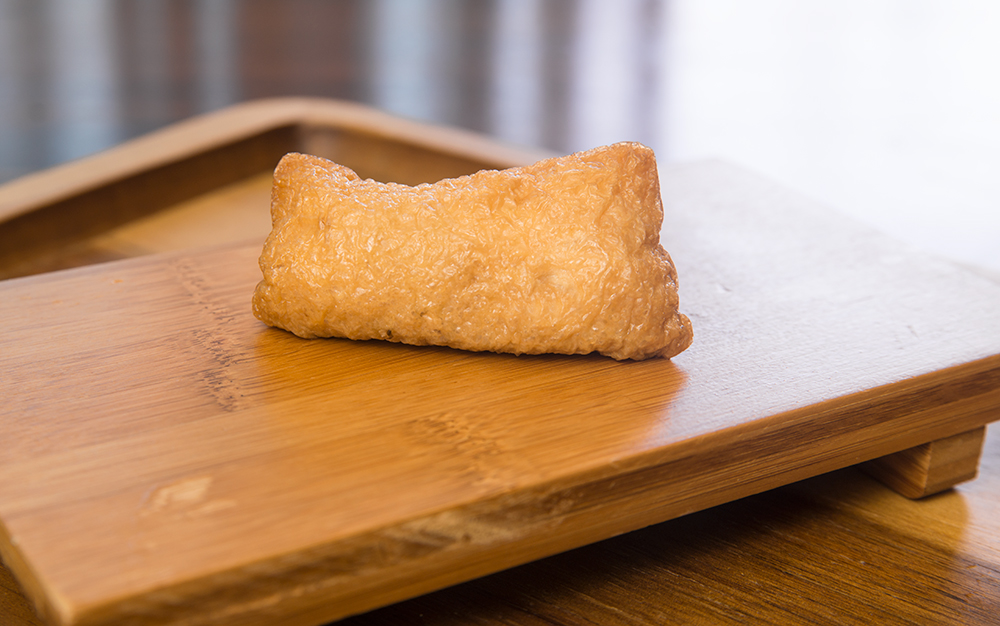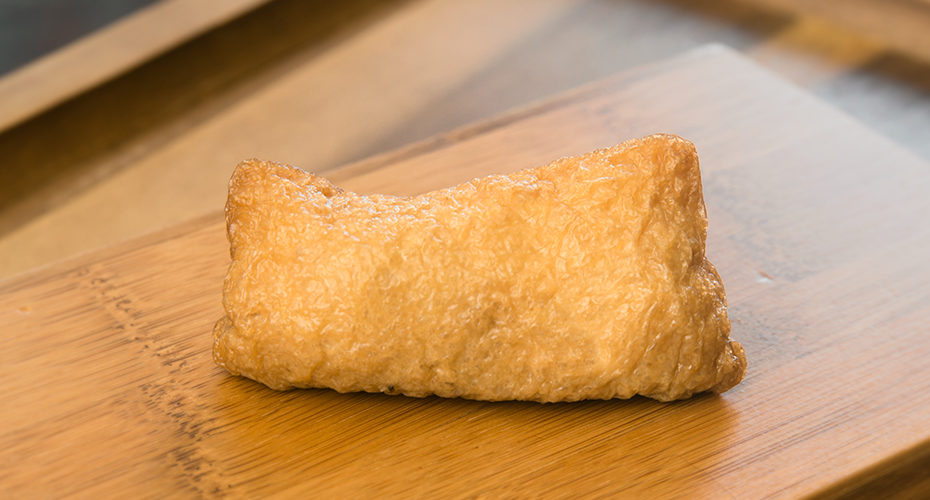Inari sushi is a fun and casual Japanese dish. You’ll find them at many Japanese restaurants and in bento boxes.
This post discusses what inari is, how to make it at home, and popular variations.
What is Inari Sushi?
Inari sushi is a fried and seasoned tofu pocket stuffed with sushi rice. It’s casual Japanese food at its finest. Sushi restaurants and izakaya often make inari. And it’s also a popular addition in bento boxes.
Inari tastes sweet, savory, and salty. It has a mild vinegary flavor too, and its texture is slightly sticky. It’s normal to eat inari sushi with your hands.
Abura-age is the Japanese word for fried tofu pockets. They are readily available at Japanese markets and online. They’re also not difficult to make from scratch.
This inari post is part of an informative sushi and sashimi guide. Check it out if you want to take your sushi game pro.
Fox Sushi
The Shinto god Inari lends its name to this popular food. Foxes are Inari’s messengers and are said to love fried tofu.
Inari is also considered a rice deity. So inarizushi seems to be a fitting name.
Inari in Japanese
Inarizushi (いなり寿司, 稲荷寿司) means the same thing as inari sushi.

How to Make Inari Sushi
Making inarizushi at home is fairly simple – especially with store-bought abura-age.
The first step is to quickly boil the tofu pouches to remove excess oil. Follow this by patting them dry.
Next, simmer the abura-age in dashi, soy sauce, mirin, and sugar. Sometimes sake is used. Simmer until the broth has evaporated. Squeeze the excess liquid from the tofu after they’ve cooled.
Finally, stuff the tofu pouches with sushi rice.
I oversimplify the process, of course. Cooking with Dog has an entertaining how-to video on making inarizushi at home. Check it out below.
Hawaii-Style Inari Sushi – Cone Sushi
Abura-age is usually cut into rectangular pouches. But they can also be cut into triangles from square slices of tofu. This is the basis for cone sushi. It’s a slight variation and is said to have originated in Hawaii.
Cone sushi is pretty simple. Take a look at the video from Foodland Hawaii below if you want to make it yourself.
Inari Sushi Fillings
Sushi rice is the standard filling for inari. But many other ingredients are sometimes added.
Sesame seeds are probably the most common addition. You may also find other ingredients like carrot, gobo, shiitake, hijiki seaweed, shiso, pickled ginger, and green beans.
Diet & Nutritional Value of Inari
Inarizushi is fairly healthy. The main downsides include sugar and sodium.
Inari Sushi Calories
One 50 g piece of inari has 124 calories, according to Calories in Japanese Foods.
Is Inari Sushi Vegan?
Traditional inari sushi isn’t vegan or vegetarian. This is because it’s simmered in dashi, and dashi contains fish. However, using kombu dashi will make it vegan. Omitting the dashi altogether is another way to achieve this.
Is Inari Gluten Free?
Inari is not gluten-free because it’s simmered in soy sauce. However, inari can be gluten-free if tamari is substituted or the soy sauce is omitted.
Does Inari Sushi Have to be Refrigerated?
It’s best to eat inari the same day they are made. You can store them in a refrigerator to keep them fresh if it will be a few hours.
However, storing inari overnight in the fridge can make the rice hard. If you choose to do so, keep them in an air-tight container. A couple of moist paper towels slow down the rice from hardening.
31 Days of Sushi
If you find this post useful or enjoyable, I suggest you check out some of the other content in my 31 Days of Sushi campaign.
Every day in August I’ll share a new piece of content. Topics are centered around nigiri and maki sushi. I include sashimi info, as well.
It’s like an omakase of sushi information!
What Do You Think About Inari?
People either seem to love or hate these tofu sushi pouches. I’m a big fan, but what do you think?
Also, do you make inari at home, and if so, do you have a favorite filling?
Please share your thoughts by commenting below!

(USA) When I was a kid I used to really dislike inari but as I’ve gotten older I’ve started to love it as much as I love fish sushi! It’s a taste that’s worth acquiring! There are many kinds of wonderful non-fish sushi that don’t get enough credit.
Hello Ash,
Haha! I had a similar distaste for inari early on.
And I totally agree that there are some excellent non-fish sushi options. Good tamago and kanpyo maki are two of my favorites.
Thank you for sharing!
Brad
My local supermarket makes inari with a little bit of spicy shrimp on top. I tried it twice but the tofu pouches were just way too sweet for me and didn’t really blend well with the rest of the ingredients. It tasted like fried sponge cake soaked in sugar water. I know the solution it’s soaked in contains sugar, but is the tofu in inari sushi is always *that* sweet, or was it just the way those particular cooks made it?
Inari is usually a little sweet, but it sounds like your local market is taking it too far! They may be trying to balance the spice with sweetness.
Does Imari sushi pouch contain any mono sodium glutamate?
Sometimes inari contains msg. Canned inari no moto usually contains it. Other packaged inari might have it too.
But it’s pretty easy to make at home. The only required ingredients are firm tofu and vegetable oil.